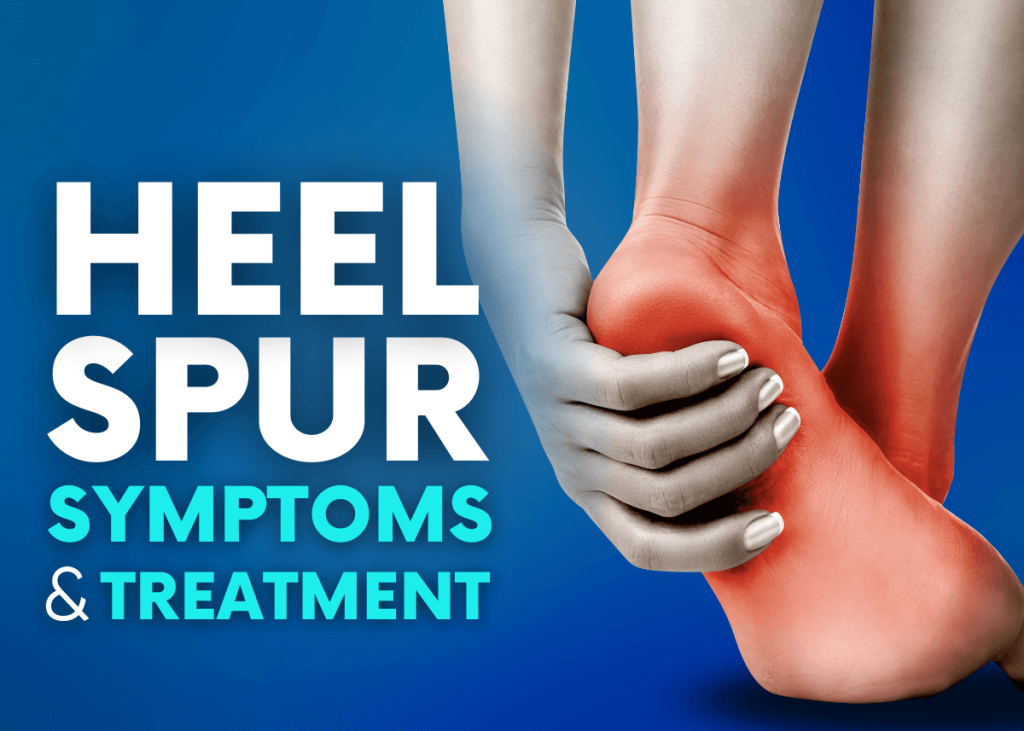
Heel pain is one of the most common orthopedic disorders. It can develop for many reasons. However, heel spurs are one of the leading causes. A heel spur is a condition that causes severe pain in the heel and can prevent you from performing many activities.
When you wake up in the morning, even getting out of bed and walking can be a big torture. The first step to start the day is the hardest. After you have taken the first step, it is good to move a little and the pain may ease a little. However, as the day progresses, the pain may return and increase by the end of the day, making it difficult for you to walk. The symptoms of heel spurs, which can last from a few weeks to many years, can reduce your quality of life.
If you are also experiencing heel pain, you are likely to have heel spurs. This blog contains important information about heel spurs, treatment options and lifestyle advice. You can learn about heel spurs and find answers to your questions.
Table of Contents:
- What is a Heel Spur?
- What Causes Heel Spurs?
- Who Mostly Suffers from Heel Spurs?
- Symptoms of Heel Spurs
- How to recognize a heel spur?
- Heel Spur Treatment
- Frequently Asked Questions
What is a Heel Spur?
Heel spurs refer to spiny bone spurs that occur on the heel. The heel spur can be seen with an X-ray image. But X-rays are not the only diagnostic tool. MRI and ultrasound examinations are performed to further investigate the cause of the pain. Because the pain experienced in heel spur discomfort is not caused by bone spurs that look like heel spurs. In order to understand the cause of pain and other symptoms, it is necessary to talk briefly about the anatomy of the foot.
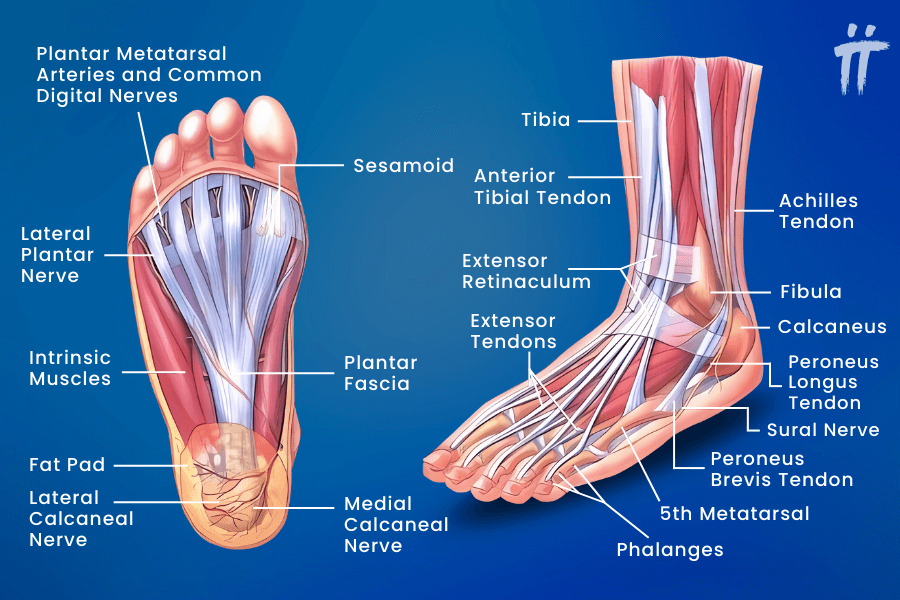
The anatomy of the foot consists of the following structures:
- Bones,
- Muscles,
- Arches (arch of the foot),
- Plantar fascia
These structures play an active role in the smooth realization of movement. You may be familiar with the function of bones and muscles, but arches and plantar fascia may sound foreign. The arches are simply responsible for evenly distributing the load carried by the foot. There are three arches in the foot, made up of bone, muscle and ligaments:
- Anterior Transverse Arc (Anterior Transverse Arc),
- Lateral Longitudinal Arc (Lateral Longitudinal Arc),
- Medial Longitudinal Arc (Medial Longitudinal Arc).
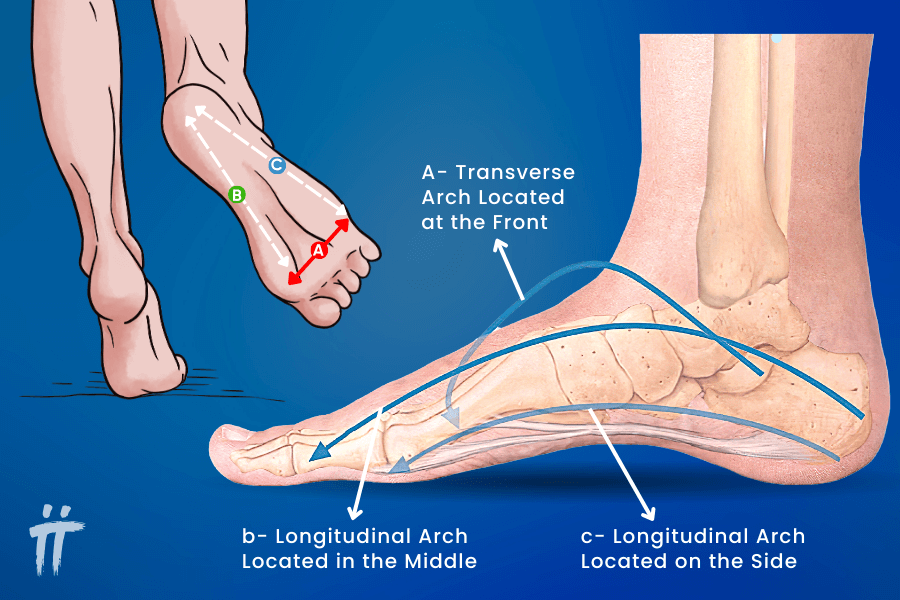
The plantar fascia is the connective tissue on the sole of the foot, extending from the heel to the toes. The plantar fascia supports the longitudinal arch in the center. It conserves the energy expended when stepping on the ground during movement and softens the impact felt on the soles of the feet. These impacts are 1.8 times the body weight while walking and 3.7 times the body weight while running. In other words, the sole of the foot of a person weighing 80 kilos; 144 kilos while walking and 296 kilos while running.
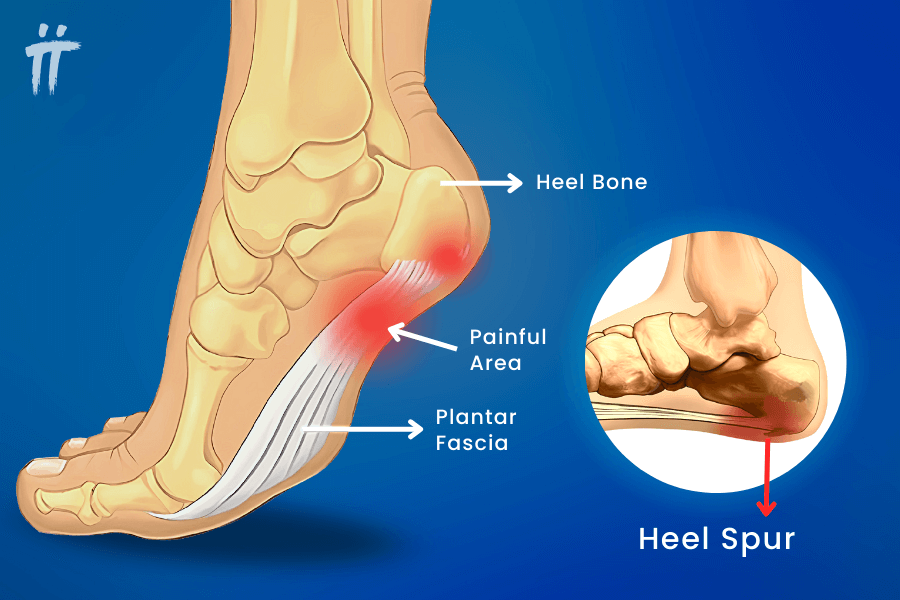
Pain in the heel spur is caused by plantar fasciitis. Plantar fasciitis, on the other hand, is a condition that consists of tears and inflammation in the part where the plantar fascia meets the heel bone.
What Causes Heel Spurs?
Most scientists agree that heel spurs are caused by repeated minor trauma. These minor traumas occur in the plantar fascia described above. The heel bone near the plantar fascia shows ossification as a result of calcium deposition.
Plantar fasciitis, which causes pain in the heel spur, is caused by constant tension and irritation of the plantar fascia. This condition, which causes swelling and pain, develops due to many factors:
- Flatfoot discomfort,
- High arch (Pes cavus): The inner arch of the foot is higher than normal,
- Obesity or sudden weight gain,
- Work in occupations that require standing or walking for long periods of time,
- Decreased muscle strength,
- Achilles tendon tension,
- Starting a new activity,
- Physical strain,
- Wearing inappropriate footwear (shoes with soles that are too soft, shoes that do not fit properly and shoes that do not support the arches sufficiently).

Who Mostly Suffers from Heel Spurs?
Because heel spurs are a common condition, they can be seen in many people. In some specific cases, however, more has been detected:
- In high-performance runners,
- In long-standing professions such as military service and teaching,
- People with obesity,
- Women between the ages of 40 and 60.
If you are in one of these high-risk groups, you should take the heel pain you experience seriously and be examined by an orthopedic specialist.
Symptoms of Heel Spurs
You can easily recognize the symptoms of a heel spur that restricts your ability to move comfortably. The most prominent characteristic is a great pain in the first step after waking up in the morning. This pain is often seen at the point where the plantar fascia connects to the heel. Patients describe this point as a pain under their feet.

The reason for the great pain in the first step is that the body is under the influence of gravity while sleeping. With this gravitational effect, the plantar fascia shortens. Therefore, when the first step is taken, there is a sudden tension in the shortened plantar fascia. The strain causes severe pain.
The intensity of your pain will also increase when you put too much weight on your foot or exert too much physical effort during the day. The pain can be relieved with rest. But the first step after rest will still be painful.
Over time, the pain can become throbbing and burning. There may also be tension and stiffness along the plantar fascia. When the heel spur progresses, it can cause pain to the point of limping.

How to recognize a heel spur?
It is necessary to be examined by a specialized orthopedic doctor to understand the heel spur. During the examination, the doctor first takes your medical history. He or she then performs a physical examination. Here it identifies the sore spot. It looks for tenderness, hardness and redness. It observes your standing posture and gait. It controls joint range of motion by performing a movement called dorsiflexion. In a movement called dorsiflexion, the wrist is lifted upwards. He can use the Windlass Test to get this movement.
Some imaging methods can also be used in the diagnosis of heel spurs. These methods
- X-ray,
- MRI,
- Ultrasound.

As a result of all these evaluations, your doctor will make a clear diagnosis of whether you have a heel spur and the treatment process will begin.
Heel Spur Treatment
We mentioned that the condition that causes pain in heel spurs is plantar fasciitis. Therefore, the treatment of heel spurs aims to heal the plantar fascia connective tissue where plantar fasciitis occurs. Connective tissues take longer to heal than tissues such as muscle and bone. Treatment of heel spurs can therefore take a long time. Early diagnosis and immediate initiation of treatment will facilitate the process. You should not delay your complaints of heel pain, you should consult your doctor to get an accurate diagnosis and start the treatment process immediately.
Heel spur treatment is divided into two. The first is conservative treatment and the second is surgical methods. Since conservative treatments provide a high rate of improvement, surgical methods are not immediately resorted to. But you need to be patient to get results from conservative treatments. Because the process of this treatment method is long. If you do not get a result within 6-12 months, only then – under the guidance of your doctor – you can resort to surgical methods.
Conservative Treatment Methods
The aim of conservative treatment is to reduce pain, relieve inflammation, release tissue from tension and strengthen muscles. Many conservative treatment methods are available for these purposes. First of all, a focused approach is taken to the patient’s complaints. Afterwards, the doctor may introduce new methods depending on the improvement in the patient.
There is no consensus on the best conservative treatment. At this point, the treatment plan is determined by the doctor’s individualized approach to the patient. Depending on the needs of the patients, some treatment methods may be prioritized. In some cases, several treatment methods can be used together. Conservative treatments provide a 90 percent cure rate.
Exercises
Heel spur exercise therapy is very effective in treating heel spurs. It can be easily applied at home without using any equipment. Positive effects can be observed even in the short term. It is divided into two for stretching and strengthening purposes. While stretching exercises provide relief to the sore area, strengthening exercises increase the endurance of the muscles.
Exercises for heel spurs:
- To ease tensions in the region,
- Strengthening muscles,
- Increasing flexibility,
- To stabilize the foot,
- To speed up the healing process,
- Symptom reduction,
- Helps relieve pain.
To get positive results from heel spur exercises, it is critical to practice them regularly and perform the movements correctly.
Organizing Your Lifestyle
Many wrong habits that make up our lifestyle play a role in the formation of heel spurs. These changes must be made first for the disease to heal. These changes include getting rid of excess weight, not standing for long periods of time, not interrupting rest, and avoiding working on hard surfaces.
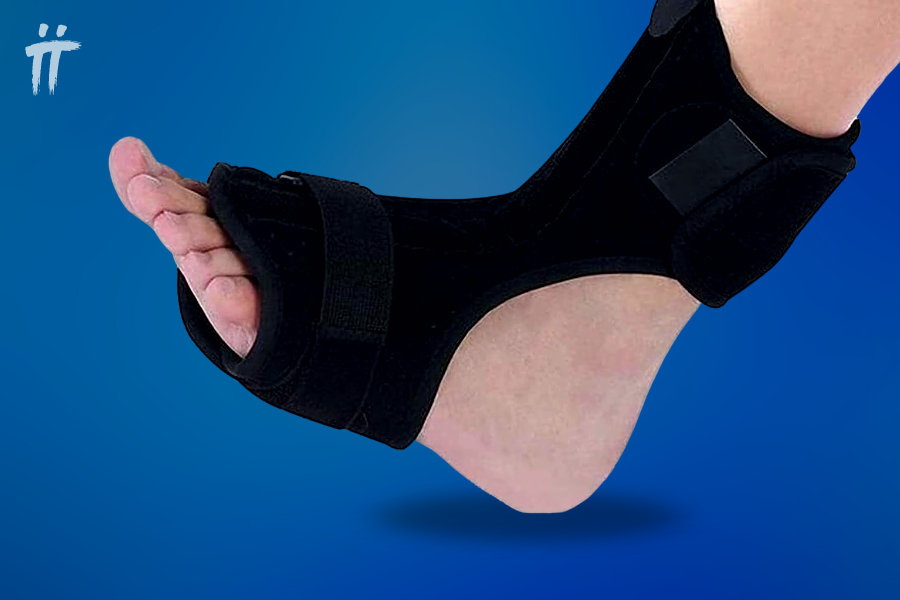
Night Splints
This apparatus is used during the night. The ankle is fixed at an angle of 90 degrees. In this way, the effect is as if you were doing stretching exercises. It is effective in relieving pain in a short time.
Hot-Cold Bath
This treatment involves contacting the affected area with hot and cold water. The foot first comes into contact with cold water for 3 minutes, then hot water for 1 minute. A total of 20 minutes of practice is done. It is very important to start with cold water and end with cold water. This method has been shown to reduce complaints.
Changes in Shoe Use
In the treatment of heel spurs, the choice of shoes should be done carefully. Shoes with high heels and hard soles should not be used. Soft-soled and flat-molded shoes that support the Achilles tendon should be preferred. Heel spur shoes can be found in accordance with the above specifications.
Insoles Usage
Shoe insoles should be individually designed. Because each person’s foot structure differs. The use of insoles for heel spurs relieves strain on the plantar fascia when walking and standing and supports the medial longitudinal arch (medial longitudinal arch). They also relieve the load on the soles of the feet when moving.

Taping
In the heel spur, increased pronation (inward rotation of the foot) occurs. This leads to more stretching of the plantar fascia and a decrease in the height of the longitudinal arch in the middle. This is prevented by the taping method. The plantar fascia is released from further tension and the longitudinal arch in the middle is supported. Low-dye is the most widely used banding technique.
Radiotherapy
This treatment method is used when other methods do not work. It can cause many side effects in young patients. Positive and negative results after treatment should be evaluated together with the doctor.
Injections
Corticosteroid injections are a method used in the treatment of heel spurs and give results. However, it is effective in the short term and loses its effectiveness in the long term. On the other hand, it can cause fat pad atrophy and plantar fascia rupture.
PRP
PRP (Platelet Rich Plasma) method is another injection that has been widely used recently. PRP, which is used for many different diseases, is also used in heel spurs. However, its effectiveness has not been fully proven.
Surgical Methods and ESWT Treatment of Heel Spurs
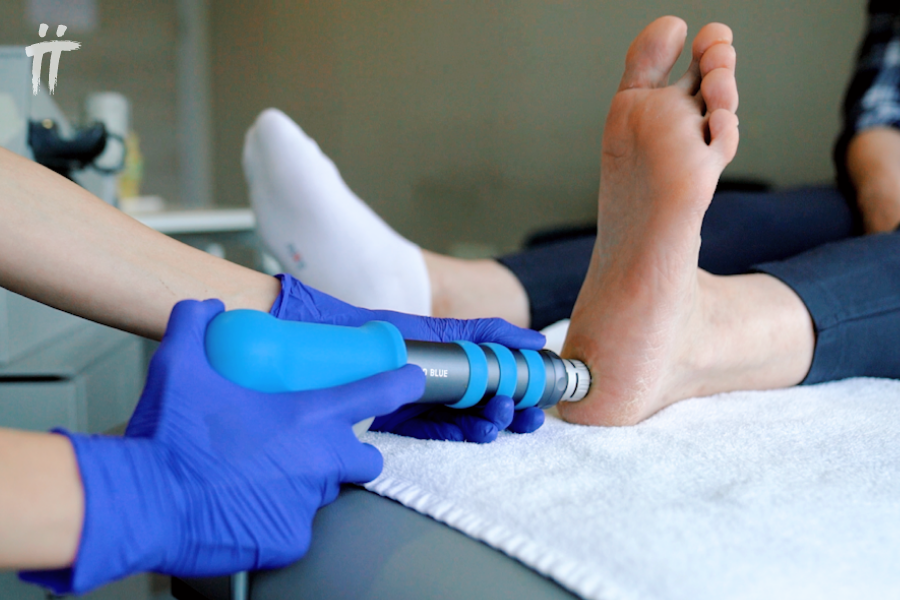
If you do not get the desired result from conservative methods in the treatment of heel spurs, then you can resort to ESWT and surgical methods.
ESWT
ESWT, which stands for extracorporeal shock wave therapy, is based on the use of generated sound waves to treat the affected area. ESWT, which is frequently used in the treatment of heel spurs, is effective in relieving pain and healing soft tissues. ESWT treatment is also popularly known as heel spur crushing treatment.
Surgical Methods
Heel spur surgery is not usually resorted to because conservative treatments provide a high rate of improvement. However, if there is no improvement within 6-12 months of treatment, then heel spur surgery is performed. The surgery can be performed openly or with endoscopy. In these surgeries, relaxation of the plantar fascia is provided. Although surgery is not the first line of treatment, it is useful in patients who do not respond to other treatment methods.
Conclusion
If you feel pain in your heel area and have difficulty taking the first step in the morning, you can contact us without delay. By making an appointment with our Orthopedics and Traumatology doctors, you can reach a solution with the right diagnosis and the right treatment.
Frequently Asked Questions
Where does the heel spur hurt?
The anatomy of the foot consists of muscles, bones, arches and plantar fascia. The plantar fascia is the connective tissue on the sole of the foot, extending from the heel to the toes. In a heel spur, pain is felt at the junction of the heel and the plantar fascia connective tissue.
What happens if the heel spur is not treated?
Like many conditions, heel spurs progress and symptoms worsen if left untreated. The disease can reach the point of incapacity to walk. If treatment is delayed, conservative methods are not effective. Advanced treatments such as ESWT or surgical methods come into play.
How long does it take to heal a heel spur?
Heel spur treatment is a long process that requires patience. Therefore, you should stick to the treatment recommended by your doctor without giving up. If you make the necessary progress with conservative treatment methods within 6-12 months, there is no need for surgical methods. Conservative treatment methods provide a high rate of recovery.
Does the heel spur go away on its own?
To heal a heel spur, you need to make some lifestyle changes. In addition, you should carry out the treatments recommended by your doctor together with these life changes. The heel spur will not go away on its own unless you follow these steps.
How can you tell if you have a heel spur?
The most important symptom of a heel spur is great pain on the first step. This first step pain can occur when you wake up in the morning or after a period of rest. These pains are also aggravated if you stand for long periods of time during the day or if you put a lot of strain on your feet. Ultimately, your doctor can decide whether you have a heel spur by performing the necessary physical examination and using imaging methods.
Which department treats heel spurs?
When you experience physical discomfort, you can consult the Department of Orthopedics and Traumatology. The heel spur is also caused by inflammation of the connective tissue of the plantar fascia. In other words, we can say that you have a problem related to bones, muscles and joints. Orthopedic specialists will help you with the necessary treatment.
Do you have a heel spur patch?
Conservative treatment methods include taping technique. In this technique, the foot is taped in certain areas. This relaxes the stretched plantar fascia and supports the longitudinal arch in the middle. The most widely used banding technique is the Low-dye technique.









Leave a Comment